Contents
- Crop Cultivation
- Agricultural Communities
- Labor
- Festivals or Rituals Related to Farming
- Pola
- Types of Farming
- Traditional Agricultural Practices
- Paddy Farming in Bhandara
- Use of Technology
- Implements and Machines used
- Irrigation
- Changes in Cultivation Methods
- Fertilizers
- Institutional Infrastructure
- Krishi Vigyan Kendra
- The Bhandara District Central Co-operative Bank
- Awareness about Schemes
- Market Structure: APMCs
- List of APMC markets(as of September 2024)
- Farmers Issues
- Graphs
- Irrigation
- A. No. of Projects
- B. No. of Ponds/Vilage Lakes and Storage Dams
- C. Irrigation Beneficiary Area vs Irrigated Area
- D. Share of Beneficiary Area Irrigated
- E. Tubewells and Pumps Installed In The Year
- F. Irrigation and Water Pumping Facilities
- Cropping Metrics
- A. Share in Total Holdings
- B. Cultivated Area (With Components)
- C. Gross Cropped Area (Irrigated + Unirrigated)
- D. Share of Cropped Area Irrigated
- E. Distribution of Chemical Fertilizers
- Land Use and Credit
- A. Area of Agricultural Land Holdings (With Size Group)
- B. Size Groups' Share in Total Agricultural Land Holdings Area
- C. No. of Agricultural Land Holdings (With Size Group)
- D. Size Groups' Share in Total No. of Agricultural Land Holdings
- E. Agricultural Lending
- F. Agricultural Credit as a share of Total Credit
- Sources
BHANDARA
Agriculture
Last updated on 6 November 2025. Help us improve the information on this page by clicking on suggest edits or writing to us.
The district of Bhandara is situated in the drought-prone Vidarbha region of Maharashtra, in the Satpura range and Wainganga Valley. It has a hot, moist, sub-humid climate and is known for its shallow to deep loamy to clayey mixed Red and Black soils. The district’s economy is primarily agricultural, with Paddy and Soybean as the major crops. It is drained by rivers such as Wainganga and its tributaries like Bavanthadi, Chulbandh, Godora, and Sun.
Crop Cultivation
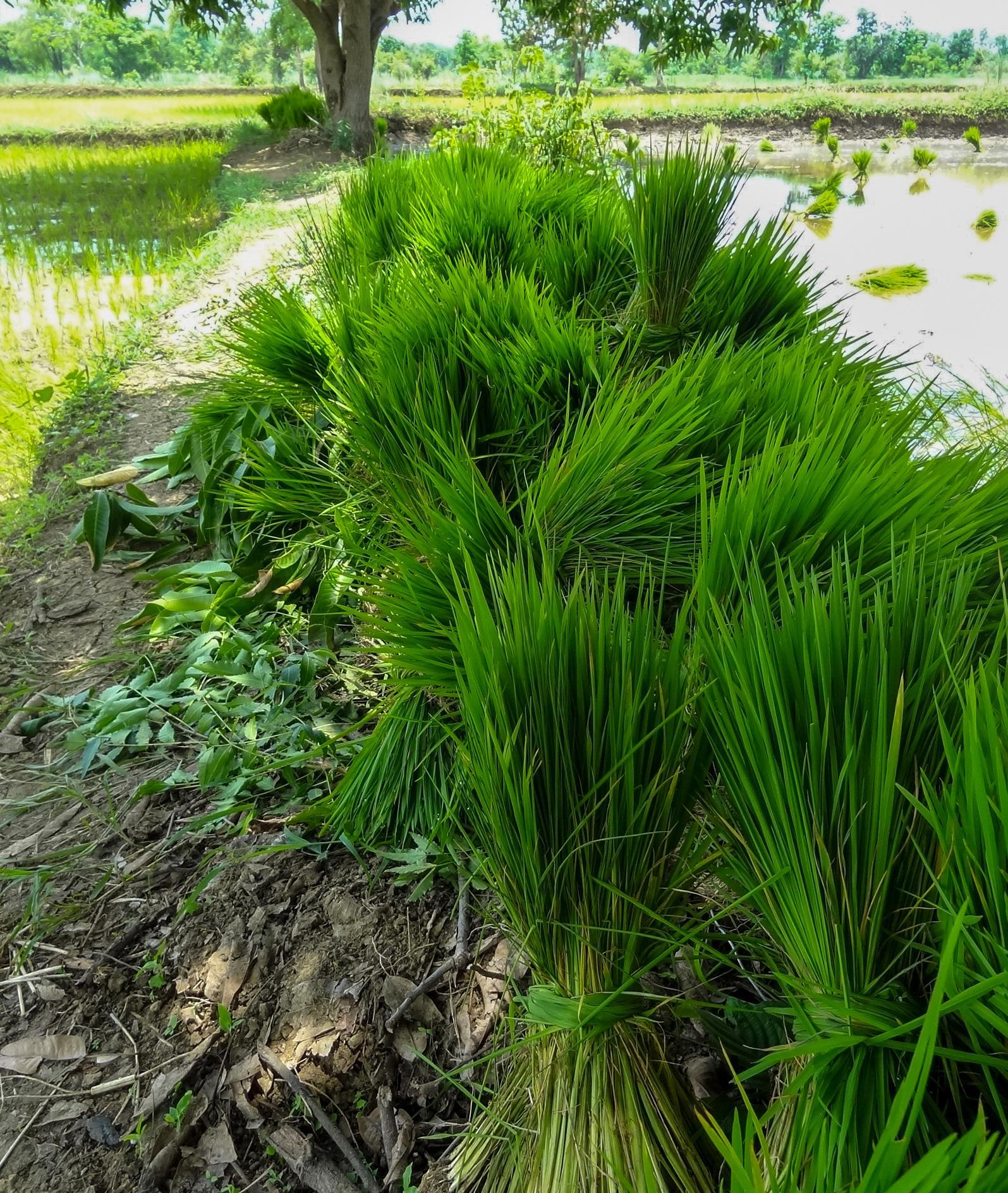
Bhandara district lies entirely within the Deccan Plateau, specifically in the Eastern Plateau and Hills region. According to the Indian Council of Agricultural Research (ICAR)’s Agriculture Contingency Plan for Bhandara, the district's soil is predominantly deep loamy to clayey, comprising a mix of red and black soils. These conditions are favourable for a wide range of agricultural and horticultural crops.
Major crops cultivated in the region include paddy, soybean, pigeonpea (tur), wheat, gram, summer groundnut, mustard, sugarcane, peas, mung (green gram), and linseed. Horticultural produce includes mango, chikoo, citrus fruits, guava, brinjal, tomato, chilli, ladyfinger (okra), leafy vegetables, and sunflower.
Rice cultivation is particularly prominent in the Wainganga valley. Among the various varieties grown in Bhandara, aromatic rice types such as Chinnor, Dubhraj, and Kalikammod enjoy high demand across India. Notably, Chinnor rice has received Geographical Indication (GI) status. Sugarcane continues to be an important commercial crop, and wheat is widely cultivated during the rabi season. Tur (pigeonpea) is also grown extensively in combination with other crops.
The district receives most of its rainfall from the southwest monsoon, which typically lasts from June to October, with the heaviest rainfall occurring in August and September. A secondary rainfall phase is brought by the northeast monsoon in November and December, although the precipitation during this period is relatively limited and primarily supports winter crops.
In recent years, there has been a notable decline in the cultivation of sugarcane, sorghum, and linseed. The primary reason for this shift, many say, is that these crops no longer fetch competitive prices in the market, with imported products being more affordable. Another factor affecting sorghum cultivation is the change in dietary habits. In the past, sorghum bread (Bhakari) was commonly eaten, but now people have switched to wheat-based products like Poli or Chapati. As a result, the demand for wheat has increased, and sorghum production has declined.
Agricultural Communities
The Bhandara district Gazetteer (1979) mentions several communities closely associated with agriculture in the region. The Ponvars are one such group who are historically linked to farming. They are said to have accompanied Chimnaji Bhosle during his Cuttack expedition, after which they were rewarded with land grants in Lanji and areas west of the Wainganga River, which were then largely forested tracts.
The Kunbis are another prominent agrarian community in the district who have traditionally been engaged in farming and landholding. The Kolis are noted for their expertise in irrigation and are mainly sugarcane cultivators. The Gowaris, a grazier community closely linked to the Ahirs and other indigenous groups, often lead pastoral lives in the forests with their cattle, though many have also taken up agriculture.
The Marars, also known as Malis, are engaged in growing vegetables and flowers. The Telis and Gandlis, who were once traditionally involved in oil pressing, have now shifted towards agriculture and petty trade.
The Dhimars follow various occupations in addition to fishing and boatmanship. They cultivate singaras (water chestnuts) in the district’s abundant tanks and also rear tasar silk cocoons on Saj trees. The Gonds, an indigenous community, live predominantly in forested areas and engage in cultivation from time to time.
Labor

In Bhandara, agricultural labor is primarily local, not migrant-based, and serves as a primary source of livelihood for many. However, this labor force remains largely unorganized, with no formal labor committees representing or advocating for their rights. Women are more involved in this labor community than men, often forming the majority of the workforce. They are especially engaged in the more labor-intensive tasks,
Locals say that the concept of contractual farming in Bhandara has not gained much traction, with limited awareness among the local population. There are, however, small-scale instances of it, such as the company "Tootie Fruity," which has contracted local farms for papaya production.
Festivals or Rituals Related to Farming
Pola
Pola is a festival primarily celebrated by farmers, observed on Pithori Amavasya, the new moon day in the month of Shravana. This festival honors bulls and oxen, acknowledging their essential role in agriculture. On Pola, people prepare special dishes such as Puran poli and mixed dal vada as offerings, or ‘naivedya,’ to the gods. A unique tradition during Pola involves placing a ‘palas’ stem at the entrance of homes, which is believed to act as a gatekeeper, preventing diseases from entering.
The Marbat Mirvanuk marks the day following Pola. During this event, a sculpture called ‘Marbat,’ made from stems of medicinal plants like Kadunim, is created. The Marbat is then burnt, and the smoke is believed to purify the air, removing the unpleasant smell often left after the rains.
As the Marbat procession moves through the city, people chant the phrase “Ida Pida Gheun Ja Ge Marbat,” which means “Take away all the troubles and diseases, O Marbat.” This reflects the belief that the Marbat has the power to cleanse people of their worries and ailments.
Types of Farming
Farming in Bhandara district, as is generally the case, is closely shaped by the nature of its soils, which are primarily derived from the Deccan Trap and are generally fertile. The region supports a diverse range of crops, with specific soil types suited to particular forms of cultivation.
Kanhar soil, formed from trap rocks, is an alluvial, blue-black soil known for its fine texture and high fertility. It crumbles easily and retains water well, making it particularly suitable for both Kharif (monsoon) and Rabi (winter) crops. Rice is the dominant crop grown in Kanhar soil due to its moisture-holding capacity and nutrient content. Kali soil, though less fertile, has a brown-black tint and is prone to waterlogging. This leads to the leaching of lime, which reduces its productivity. Despite this, it is still cultivated in some areas.
Among the black soils, Morand I and Morand II show minor differences in composition. Morand I contains limestone nodules, while Morand II has traces of sand transported from nearby sandstone hills. Both types are found away from riverbanks and were historically used for cultivating Rabi crops like wheat and linseed, as well as Kharif crops such as jowar (sorghum). Khardi soil, which resembles Morand II in appearance, is considered inferior due to its shallowness and the presence of chunkari (stone fragments).
Sihar soil, derived from the detritus of crystalline rocks, has a reddish-yellow color and remains relatively stable even during hot weather, showing minimal cracking. It is typically used for rice cultivation, which thrives in its structure and moderate fertility.
Bardi soil, on the other hand, is composed of gritty lateritic detritus and is found in foothill and sloping areas. Its low nutrient content limits its use to minor millets and lower-yielding rice varieties.
Along the riverbanks, various alluvial soils such as Kachhar, Mardini, and Reti are found. These soils are deep, fertile, and have good water retention due to their clay loam texture. Kachhar is blackish with low sand content; Mardini is red and sandy; and Reti is composed largely of sand. These soils are suitable for a range of crops, especially those requiring consistent moisture.
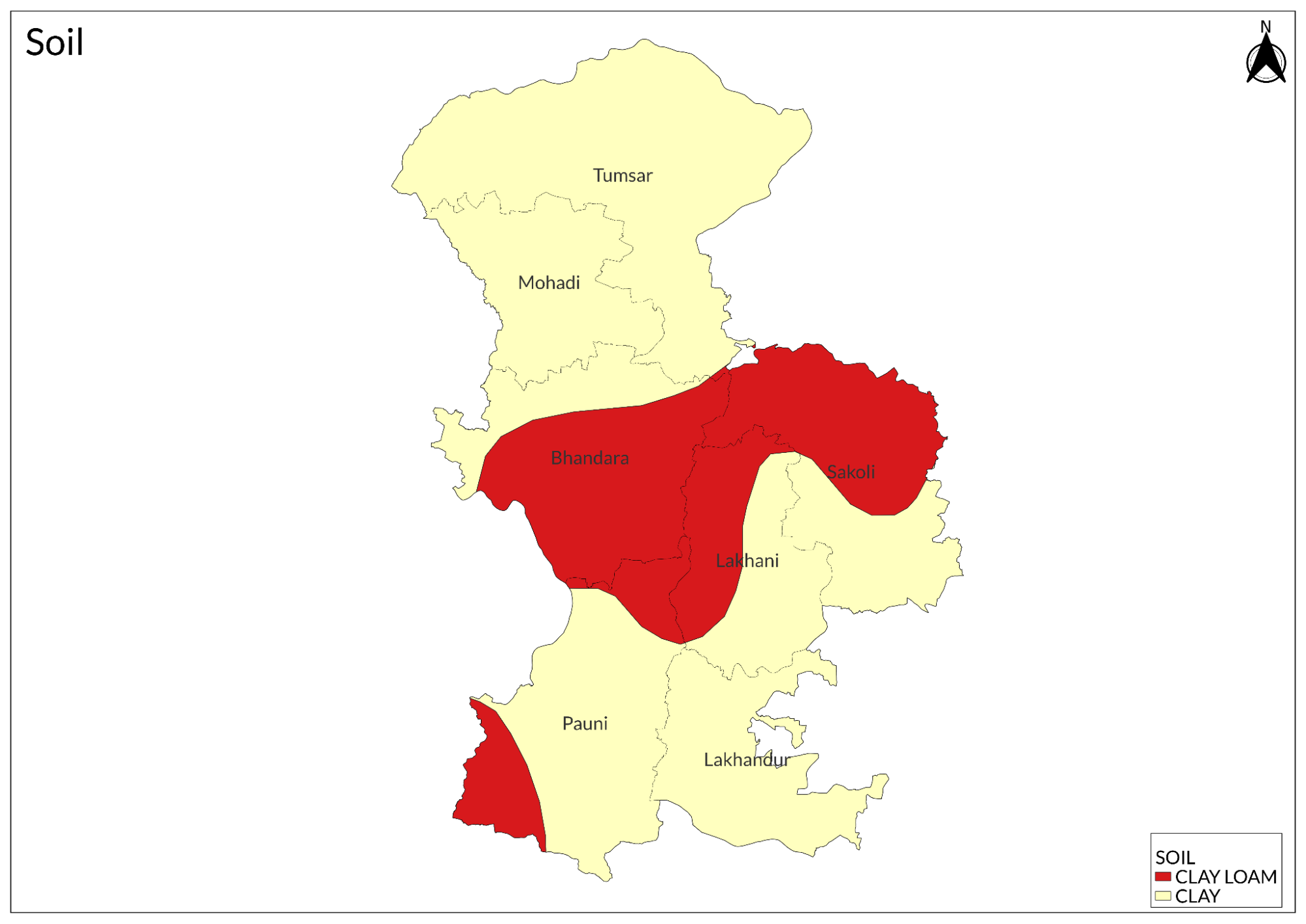
Traditional Agricultural Practices
Paddy Farming in Bhandara
Often referred to as the "rice bowl of Maharashtra," Bhandara is the third-highest rice-producing district in the state, with an annual output of approximately 20 lakh tonnes. The district supports extensive paddy cultivation, facilitated by its fertile soils and favorable climatic conditions. A significant Rice Miller Cluster is located in the MIDC area of Pauni, where large-scale rice processing takes place. There are around 70 to 90 different rice varieties cultivated in the district, including popular ones like HMT, Shriram, Janaki, Chinnor, and Kalimoch. Notably, as mentioned above, the Chinnor variety of the district received a Geographical Indication (GI) tag from the Government of India in 2023.
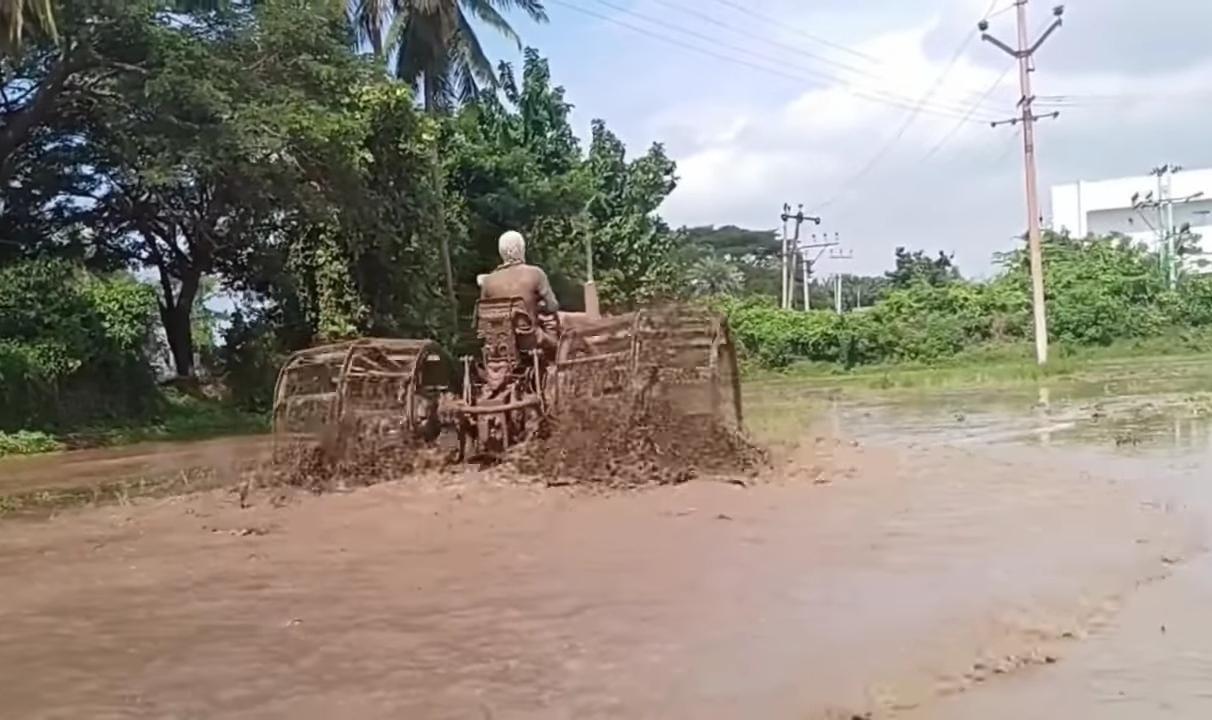
The process of rice cultivation in Bhandara is labor-intensive and follows a well-established sequence of practices. Rohna or Parne is one of the most common methods used to transplant rice and it involves raising of seedlings in a nursery before transferring them to the main field.
The method begins with nursery preparation, where a specific area, called the nursery (mar), is prepared for sowing. The soil in the nursery is plowed at least twice, first with a deep plow (nangar) and then with a paring plow (bakhar). Heavy manuring is applied to ensure the soil is fertile. In modern times, plowing is done with tractors, though in the past, bullocks were used for this task.
Once the nursery is ready, seed sowing begins, with rice seeds being thickly sown. After the seedlings have grown, they are carefully transplanted to the main field (Bandhya). Transplanting allows for better spacing and management of the rice crop, leading to healthier plants.
An alternative to this method is broadcast sowing, where rice seeds are directly sown in the main field without transplanting. Rice varieties grown this way are generally lighter, require less water, and ripen earlier. In contrast, heavier rice varieties need more water and take longer to ripen. This method is also used for crops like mustard and wheat, though it was introduced later and is not the traditional practice for rice cultivation.
Weeding is an important step in rice cultivation and is usually done manually to ensure a good crop. After the rice is fully grown, reaping and threshing follow. The crop is cut and left to dry on the ground for 2-3 days. It is then stacked on the threshing floor, typically a dry, stamped field. Each cultivator keeps their produce separate during this process. Finally, the harvested grains are stored either at home or in government godowns for safekeeping.
Use of Technology
Farm mechanization in the Bhandara district has been gradually increasing. The district's Farm Power Availability (FPA) is 0.957 kW per hectare, ranking 21st in Maharashtra. This is lower than the state average of 1.185 kW/ha and significantly below the national average of 2.025 kW/ha.
In terms of equipment availability, farmers in Bhandara have access to tractors, threshers, and paddy transplanters through 22 dealers spread across various talukas. Threshers are especially important for managing the harvest efficiently.
There has been a noticeable rise in machinery use, with more farmers adopting tractors and other farm equipment. However, power tillers have yet to gain widespread popularity among local farmers.
Farm mechanization, when combined with suitable post-harvest technologies, has the potential to increase income for farmers. However, it is important to strike a balance between affordability, customization, and local farming conditions to ensure the successful adoption of these technologies.
Implements and Machines used
Harvesters, particularly combine harvesters, have revolutionized the way crops are collected. These machines handle multiple tasks, including reaping, threshing, and winnowing, all in one go. This multitasking ability reduces the need for manual labor and makes the harvest process more efficient.
For protecting crops from pests and diseases, tools like sprayers, dusters, and foggers are essential. These instruments apply fungicides and insecticides, helping to maintain crop health by keeping pests in check. Seed drills play a critical role in ensuring precision during planting. By placing seeds at the correct depth and spacing, they promote uniform germination and improve overall crop establishment.
Threshers are key to speeding up the harvest process. They separate grains from crops like wheat, rice, and pulses, improving efficiency and reducing manual effort. Weeding tools, whether manual or mechanical, are crucial for removing unwanted plants that compete with crops for nutrients. Keeping the field weed-free improves the growth and yield of the main crop. Seed transplanters are particularly useful for crops like rice, where transplanting seedlings is necessary. These machines ensure uniform spacing and save time during the planting process.

Hand tools like shovels, hoes, sickles, and knives remain indispensable for farmers. These simple yet effective tools are used for various manual tasks, from planting to harvesting. After the harvest, proper storage is critical to prevent spoilage. Storage silos and warehouses, which can be found at the taluka level in the district, play a vital role in food security by ensuring that grains are safely stored. Most of these storage facilities are government-operated.
Irrigation
Bhandara is a district that is categorized in government records and district plans as a ‘better-irrigated’ region due to its traditional tanks, rivers, and sufficient rainfall. Around 1.42 lakh hectares of land in the district are irrigated through various irrigation projects. These projects are categorized into three types: Major Irrigation Projects, which cover areas of more than 10,000 hectares; Medium Irrigation Projects, which cover between 2,000 and 10,000 hectares; and Minor Irrigation Projects, which irrigate less than 2,000 hectares.
The Wainganga River is the main water source for irrigation, flowing across the district for about 200 kilometers and passing through five out of the seven blocks. One of the major irrigation projects in the district is the Gose Khurd Dam (Indira Sagar Dam), located on the Wainganga River, which can irrigate 2,50,800 hectares of land.
In addition to the Gose Khurd Dam, there are several medium irrigation projects, including Sarona, Betekar, Chandpur, and Bagheda. Other surface irrigation sources include tanks, wells, ponds, and the tributaries of the Wainganga River.
Various sources are used for irrigation in the district, such as wells, minor, medium, and major irrigation systems, as well as lift irrigation systems and tanks/ponds. Farmers also rely on diesel and electric pump sets to draw water for their crops.
Changes in Cultivation Methods
Broadcast sowing is a new technique introduced in farming, replacing traditional methods. In areas with heavy black soil, particularly in the southwest of the district, rice is now sown using broadcast methods. This shift has been driven by several factors, including scanty rainfall, labor shortages, limited capital, and the desire for an early crop.
Fertilizers
In the Bhandara district, both organic and inorganic fertilizers are used in agriculture. Organic fertilizers include manure, which takes about a year to decompose, goat manure, and vermicompost, which takes around six months to decompose. Vermicompost production is also carried out on farms within the district. In contrast, inorganic fertilizers such as urea, DAP, and NPK are widely used. Additionally, various booster doses are applied to enhance crop growth.
However, the majority of farming in the district relies heavily on inorganic fertilizers, with only a small portion utilizing organic methods. The increasing reliance on inorganic fertilizers is primarily because once farmers begin using them, they find it difficult to go back to organic ones. Over time, the soil becomes so accustomed to inorganic inputs that switching to organic methods becomes challenging, as crops struggle to grow in soil that the long-term use of inorganic fertilizers has heavily impacted. This dependency has made it difficult for farmers to transition back to organic farming practices.
Institutional Infrastructure
According to the NABARD’s Potential Linked Credit Plan (2023-24) report, Bhandara has an averagely developed agricultural infrastructure, including 5 Agricultural Produce Market Committees (APMCs), 225 godowns, 2 cold storage facilities, 5 soil testing centers, 5 plantation nurseries, 368 Primary Agriculture Credit Societies, 142 farmers' clubs, and approximately 825 fertilizer, seed, and pesticide outlets. Additionally, there is one Krishi Vigyan Kendra (KVK) supporting agricultural extension services in the region.
Krishi Vigyan Kendra
The Krishi Vigyan Kendra (KVK) in Sakoli, Bhandara, was established in March 2002 and operates under the administrative control of Dr. Panjabrao Deshmukh Krishi Vidyapeeth, Akola. It is situated on Lakhandur Road, approximately 45 kilometers from Bhandara city, and spans a total area of 17.30 hectares.
KVKs play a vital role in developing and promoting location-specific agricultural technologies. They refine and demonstrate these technologies to bridge the gap between research institutions and farmers. The KVK in Sakoli acts as a knowledge and resource hub, supporting initiatives from the public, private, and voluntary sectors aimed at enhancing the agricultural economy of the district.
The Bhandara District Central Co-operative Bank
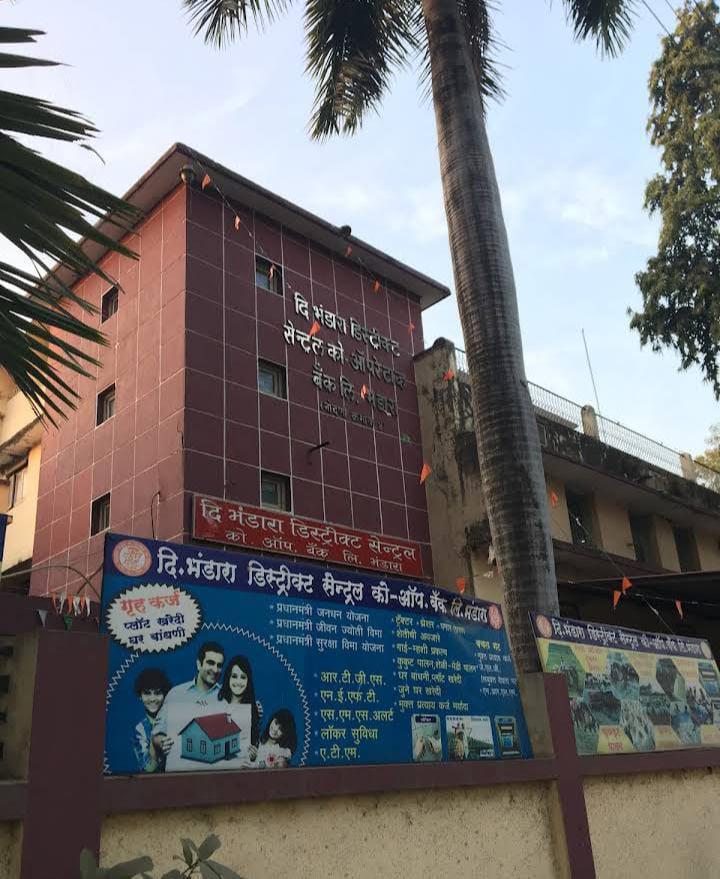
The Bhandara District Central Co-operative Bank, established in 2003, serves the entire Bhandara district, covering all seven talukas. The bank operates through a network of 46 branches, with its headquarters located in Bhandara.
The bank has significantly benefited farmers through various schemes, providing crop loans to thousands of farmers, as well as offering financial support to credit unions, women’s self-help groups, and students in the form of educational loans. Additionally, the bank offers modern banking services, including micro-ATM, mobile banking, and ATM facilities.
Awareness about Schemes
Farmers in the region are well-informed about various government schemes, thanks to continuous efforts by the government to raise awareness. Moreover, these farmers are often seen advocating for their rights, and engaging with the government when necessary.
Important initiatives include the Long Term Irrigation Fund (LTIF) by NABARD, aimed at completing pending irrigation projects, and the Pradhan Mantri Krishi Sinchai Yojana (PMKSY), which seeks to extend irrigation coverage and improve water use efficiency.
Several central government schemes are also actively supporting the agricultural community in Bhandara. These include the Kisan Bima Yojana, Kisan Samman Nidhi Yojana, Pradhan Mantri Fasal Bima Yojana (crop insurance), and the National Agricultural Development Scheme, which focuses on the welfare of Scheduled Castes and Scheduled Tribes.
At the state level, specific schemes cater to marginalized groups. The Babasaheb Ambedkar Agricultural Self-Reliance Scheme focuses on empowering Scheduled Caste farmers by enhancing their agricultural self-reliance. The Irrigation Well Scheme for Farmers provides financial support to construct irrigation wells, improving water availability for crops. Similarly, the Birsa Munda Krishi Kranti Yojana targets Scheduled Tribe farmers, promoting agricultural progress through focused initiatives. The National Agricultural Development Scheme also provides support, including provisions for irrigation wells and other agricultural resources, specifically for Scheduled Castes and Scheduled Tribes.
Market Structure: APMCs
List of APMC markets(as of September 2024)
|
Sr. No |
Name |
Est. Year |
Chairman |
No. of Godowns |
|
1 |
Bhandara |
1960 |
Vivek Nakhate |
NA |
|
2 |
Lakhandur |
1977 |
Eshwar Aatmaram Ghormode |
3 |
|
3 |
Lakhani |
1963 |
Shivram Gihrhepunge |
6 |
|
4 |
Pavani |
1965 |
Youraj Devaji Wasnik |
15 |
|
5 |
Tumsar |
1972 |
Bhaurav Natthuji Tumsare |
34 |
Farmers Issues
Several reports indicate that central India, including Bhandara, is experiencing significant changes in its monsoon patterns. There is a noticeable weakening of the June to September monsoon, accompanied by an increase in heavy to extreme rainfall events. A 2009 study by the Indian Institute of Tropical Meteorology, Pune, identified this trend. Additionally, a 2018 World Bank study ranked Bhandara among the top 10 climate hotspots in India. These hotspots, which also include neighboring districts in Vidarbha, Chhattisgarh, and Madhya Pradesh, are areas where changing weather patterns are expected to negatively impact living standards. The World Bank study warns that if these trends continue, people in these regions may face significant economic challenges.
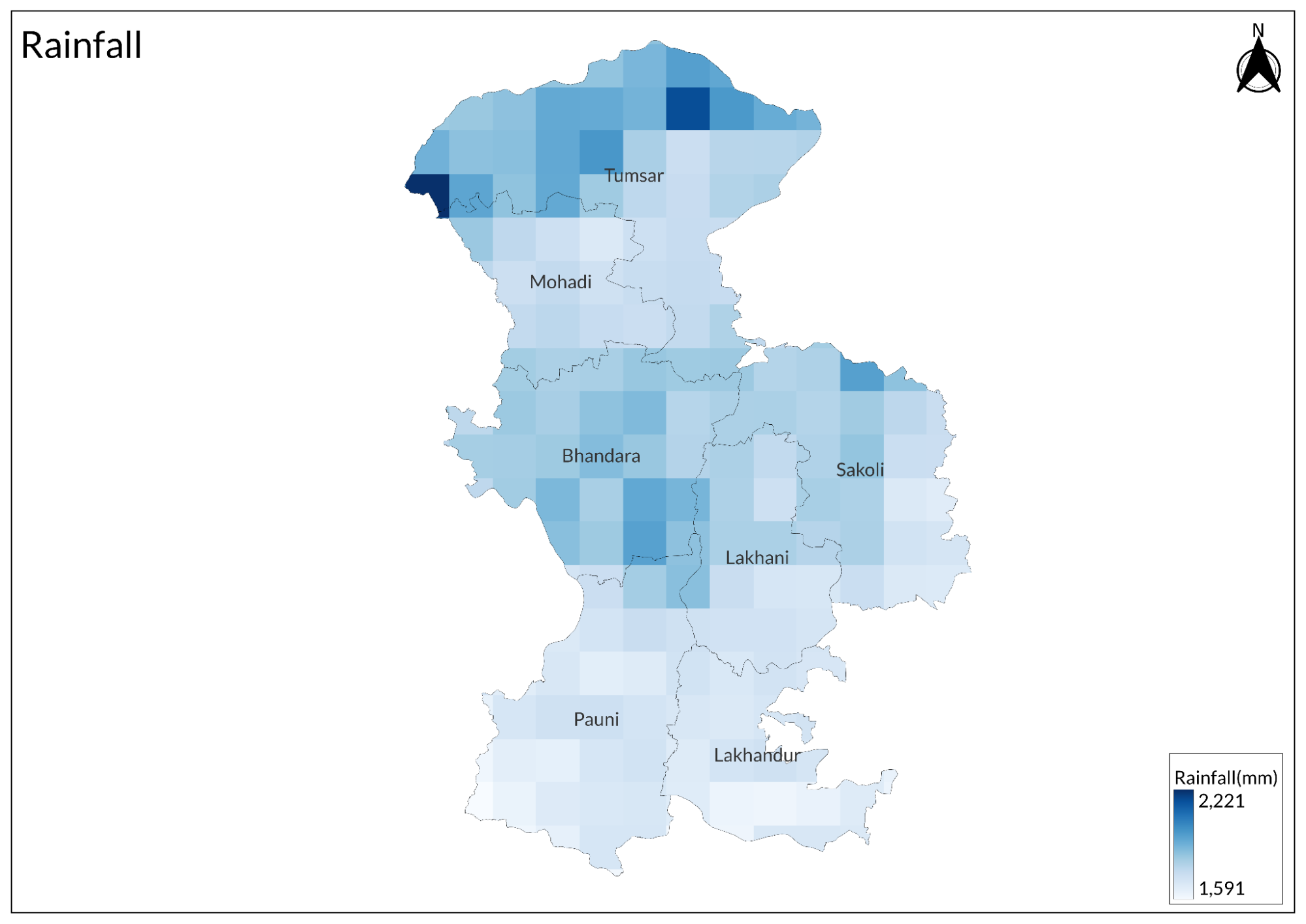
A 2018 report by the Revitalising Rainfed Agriculture Network, based on rainfall data from the India Meteorological Department, further highlights climate changes in Maharashtra, particularly in the Vidarbha region. According to the report, the frequency and severity of dry spells increased in almost all Vidarbha districts from 2000 to 2017. While the long-term annual average rainfall has remained fairly constant, the number of rainy days has decreased. This means the same amount of rain is falling over fewer days, which can negatively affect crop growth and agriculture.
For Bhandara, studies predict an increase in extreme rainfall by 14 to 18 percent compared to baseline levels, while dry days during the monsoon season are also expected to rise. Moreover, a study on climate change adaptation in Maharashtra projects a steady increase in the region’s annual mean temperature. For the Nagpur division, where Bhandara is located, temperatures are expected to rise by 1.18 to 1.4 degrees by 2030, 1.95 to 2.2 degrees by 2050, and 2.88 to 3.16 degrees by 2070. This projected increase is the highest for any region in Maharashtra, underscoring the potential climate challenges that lie ahead for Bhandara and its neighboring districts.
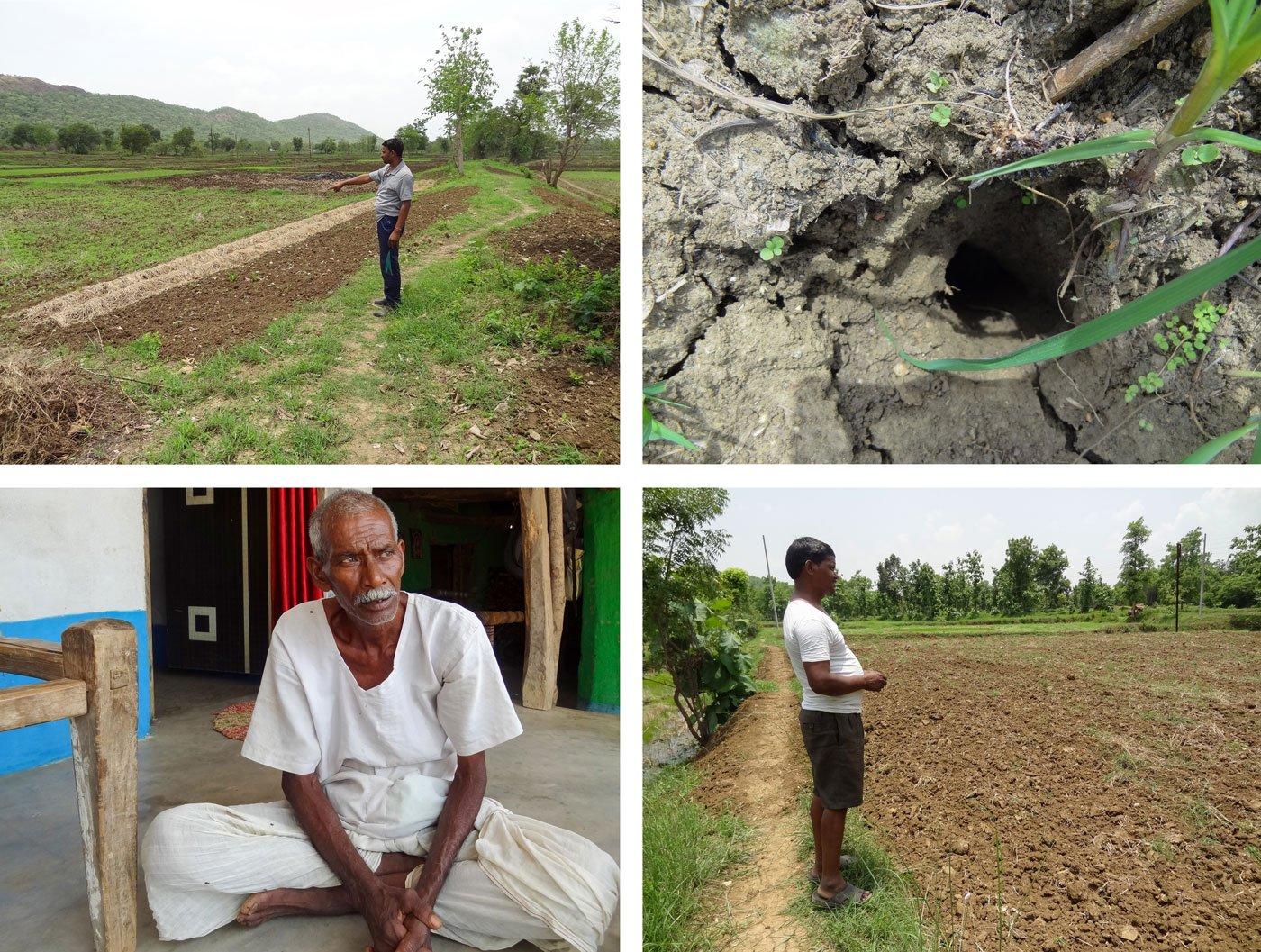

One of the other key challenges is the shortage of labor. Many essential tasks like planting, weeding, and harvesting require timely attention, but farmers often struggle due to insufficient manpower. This labor shortage is attributed to the lack of migrant workers in the district, as well as local laborers moving away from farming in search of better employment opportunities outside agriculture.
The issue of loans is also a major concern. Farmers rely heavily on loans to purchase seeds, fertilizers, and machinery. Although banks provide substantial loans, many small landholders continue to turn to traditional moneylenders, or "Sawakars," who charge high interest rates, increasing the farmers' financial burden. The stress of loan repayment adds to their economic struggles, making it harder for them to sustain their livelihoods.
Farmers also face low prices for agricultural products. Despite their hard work, they often receive inadequate compensation for their produce, which directly impacts their income and leaves them struggling to cover the costs of farming and household expenses.
Another challenge is the loss of agricultural land due to infrastructure projects like large dams. For instance, when dams such as the Gose Khurd are constructed, farms situated on riverbanks are flooded as the riverbed rises. This results in the permanent loss of valuable farmland, leaving farmers without their primary source of income.
Graphs
Irrigation
Cropping Metrics
Land Use and Credit
Sources
Bhandaradccb.com.https://www.bhandaradccb.com/about-us.html
Gazetteers Department. 1979. Bhandara District. Government of Maharashtra.
ICAR. MAHARASHTRA Agriculture Contingency Plan for District: BHANDARA.ICAR - CRIDA - NICRA.https://www.icar-crida.res.in/CP/Maharastra/…
Jaideep Hardikar. 2019. "Belated Rains, Beleaguered Farmers in Bhandara."United Nations Development Programme.https://www.undp.org/india/belated-rains-bel…
NABARD. 2023-24. Potential Linked Credit Plan: Akola Maharashtra Regional Office, Pune.https://www.nabard.org/auth/writereaddata/te…
Office of the Registrar General & Census Commissioner. 2011. Census of India. Government of India.http://censusindia.gov.in
Last updated on 6 November 2025. Help us improve the information on this page by clicking on suggest edits or writing to us.